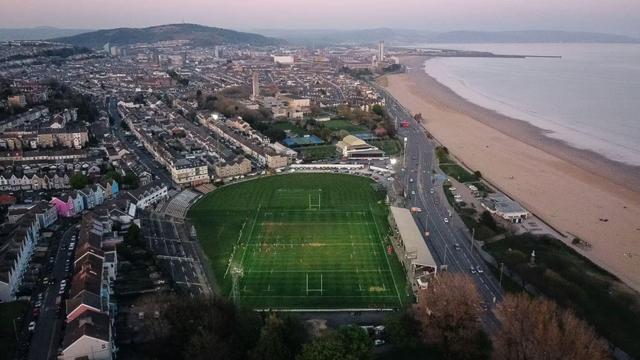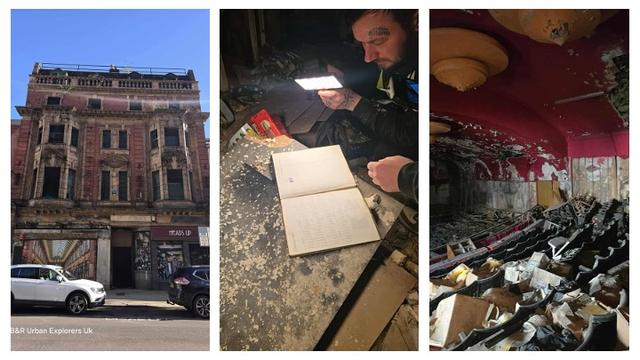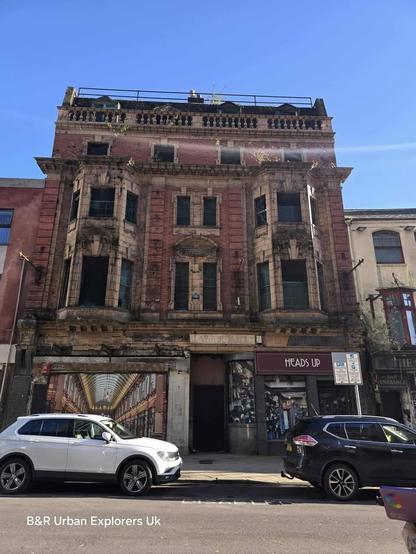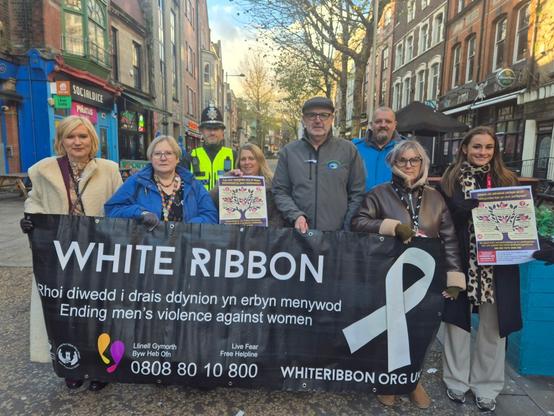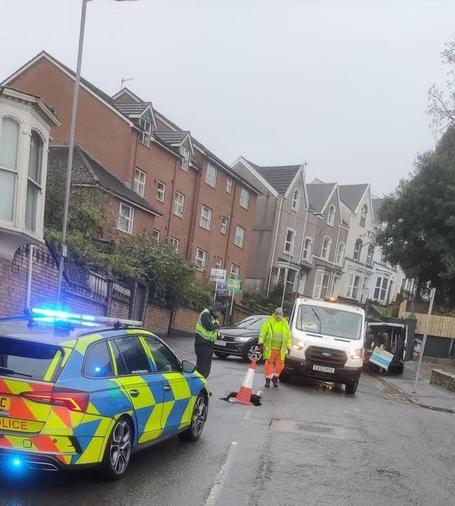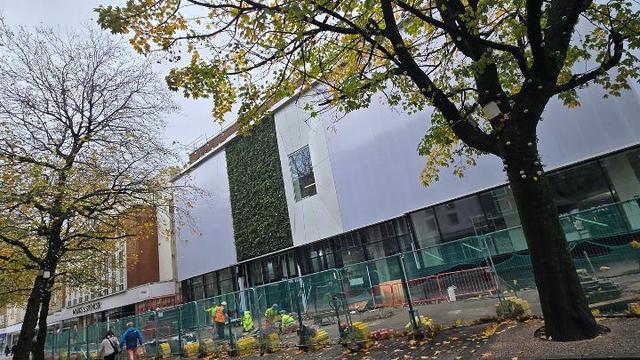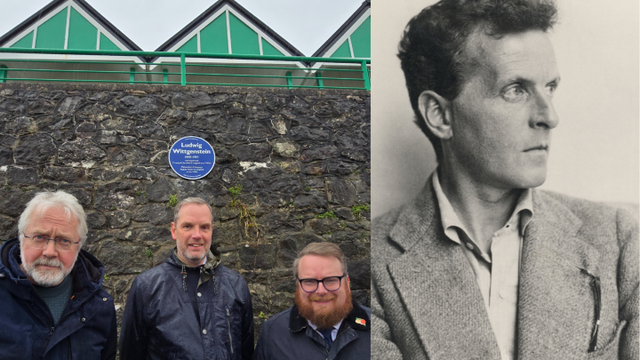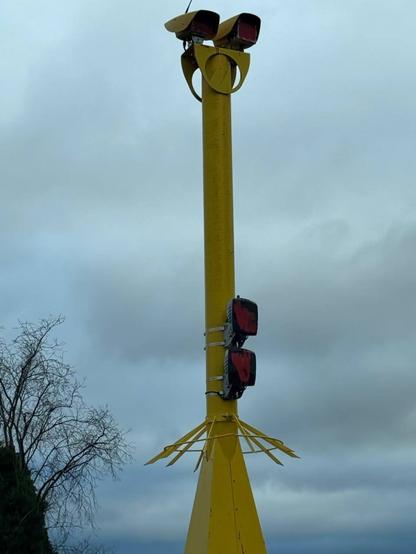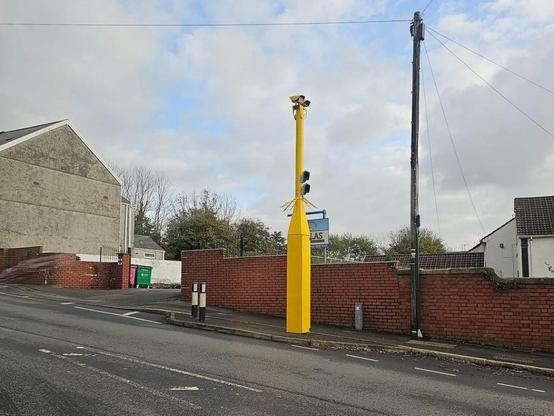Swansea’s Christmas Parade lights up the city — and earns national recognition
Organised by Swansea Council, the event kicked off at the Guildhall where Santa illuminated the building in red and green before launching the first of two fireworks displays. Crowds gathered at the entertainment stage to enjoy live performances, with professional acts and community groups bringing the city centre to life.
This year’s parade followed a new route, travelling down St Helens Road and the Kingsway before arriving at the main stage supported by Specsavers Swansea and Mumbles. Kev Johns MBE kept the crowd entertained before Santa’s grand arrival, where he lit the towering Christmas tree and switched on the city’s festive lights, followed by a second fireworks display.
The procession featured illuminated floats, marching bands, and larger-than-life characters. Highlights included Spark! the light-up band, the Winter Wonderland Birds, and a new addition for 2025 — the Living Snow Globe, complete with a Snow Queen in a swirling wintry scene. The Witches of Oz float also made a magical return, with the Good Witch in pink and the Wicked Witch in green.
More than 40 local community groups took part, including Mellin Theatre Arts, One Heart Drummers, and Bonymaen Kids Play Initiative — showcasing the depth of Swansea’s creative talent and community spirit.
The parade has now been shortlisted for a prestigious national award by the National Outdoor Events Association, recognising its impact, creativity and community engagement.
Councillor Rob Stewart, Leader of Swansea Council, said:
“Swansea truly came alive as thousands joined us for our spectacular Christmas Parade. This event is a highlight of the festive season, and I’m incredibly proud of the effort and creativity that made it possible. It was a wonderful celebration of Swansea’s community spirit and a fantastic way to start Christmas together.”
View our photo gallery of the parade highlights, featuring illuminated floats, performers, and the moment Santa lit up the city.
A Cinderella-inspired illuminated carriage leads the parade past the Royal Court Hotel.
(Image: Swansea Council)Parade performers light up the street with glowing shoes and festive costumes.
(Image: Swansea Council)The Grinch makes a mischievous appearance on the Whoville float as fireworks light up the sky.
(Image: Swansea Council)A roller-skating performer dressed as a glowing gift box entertains the crowd.
(Image: Swansea Council)The Grinch returns on a peppermint-themed float packed with festive characters.
(Image: Swansea Council)Giant gingerbread characters bring sweetness to the festive procession.
(Image: Swansea Council)A glowing red dragon puppet mesmerises the crowd with its mechanical movements.
(Image: Swansea Council)A vibrant insect lantern floats above the crowd in a sea of artificial snow.
(Image: Swansea Council)Giant gingerbread characters bring sweetness to the festive procession.
(Image: Swansea Council)A gingerbread girl waves from a candy-themed float decked in festive lights.
(Image: Swansea Council)The Snow Queen poses inside her magical snow globe, surrounded by icy branches and ornaments.
(Image: Swansea Council)A glowing snow globe reveals a wintry castle scene as families gather to watch.
(Image: Swansea Council)A giant inflatable octopus dances through the streets with glowing tentacles.
(Image: Swansea Council)Spark! performers energise the crowd with illuminated drums and theatrical flair.
(Image: Swansea Council)Giant illuminated stars float above the crowd as artificial snow blankets the parade route.A performer in a tropical costume waves to the crowd, bringing warmth to the winter parade.A traditional pipe band in full Scottish regalia marches through the city centre.A glowing float of lantern animals — including an elephant, zebra and monkey — delights spectators.Spark! performers energise the crowd with glowing drums and futuristic costumes.A character car resembling Lightning McQueen leads the way, followed by a glowing double-decker bus.Swansea’s towering Christmas tree glows with blue and white lights as crowds gather to celebrate.Fireworks light up the sky above the Guildhall as Santa kicks off the city’s Christmas celebrations.A team of LED-lit drummers perform in formation, energising the crowd with rhythm and light.A glowing snow globe float sparkles with artificial snow and icy decorations.Parade participants dressed as glowing Christmas presents light up the street with festive joy.A fierce red dragon puppet rolls through the snow as spectators cheer.Children and families line the parade route, capturing the magic of the night on their phones.Kev Johns MBE brings sparkle and humour to the parade in his iconic pantomime dame costume.
Related stories from Swansea Bay News
Swansea’s Christmas Parade shortlisted for national award
The city’s festive spectacular has been recognised nationally for its creativity and community impact.
New route announced for Swansea Christmas Parade
Find out how this year’s parade took a fresh path through the city centre.
#christmas #christmasLightSwitchOn #christmasLights #christmasParade #cllrRobStewart #fatherChristmas #featured #floats #kevJohns #santa #sionCorn2 #spark #swansea #swanseaChristmasParade #swanseaChristmasParade2025

